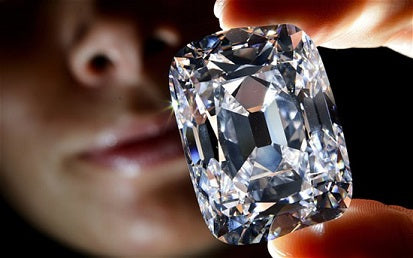Diamonds have long been synonymous with rarity, luxury, and exclusivity. But are they really as rare as we’ve been led to believe? This question prompts a deeper examination of the diamond industry, its history, and the real story behind these sparkling stones. Let’s dive into the surprising truth about mined diamonds and explore why they’re not as scarce as you’d think.
The Myth of Rarity: Why Diamonds Seem So Exclusive
Since the late 19th century, diamond companies have meticulously crafted a perception of rarity. This narrative, largely driven by marketing campaigns and clever advertising, has positioned diamonds as the ultimate symbol of romance, commitment, and status. De Beers, the diamond conglomerate, played a significant role in creating this image with its iconic “A Diamond is Forever” slogan. But is this perception of rarity rooted in reality, or is it a clever construct to drive demand?
An Abundance Beneath the Surface: The Supply of Mined Diamonds
Contrary to popular belief, the Earth is home to a considerable number of diamonds. Geologically, diamonds are formed under intense pressure and heat deep within the Earth’s mantle, eventually being brought to the surface through volcanic eruptions. While the process may sound exotic, diamonds are actually quite abundant in terms of geological quantity. They are scattered throughout the Earth’s crust, ready to be mined in vast quantities.
The De Beers Monopoly: Controlling the Diamond Market
For much of the 20th century, De Beers maintained a near-monopoly on the global diamond market. This control allowed the company to manage the supply of lab diamonds, thus maintaining high prices and the illusion of rarity. By stockpiling diamonds and regulating their release, De Beers effectively kept the market in check, ensuring that the public’s perception of diamonds as rare and valuable remained intact. However, this monopoly has weakened over time, leading to a more open market and, consequently, a broader understanding of the true abundance of diamonds.
The Impact of Technology and Globalization: A Shift in Perception
With advancements in technology and globalization, the diamond industry has undergone significant changes. Modern mining techniques have made it easier to extract diamonds from the Earth, increasing the overall supply. Moreover, the emergence of synthetic diamonds, created in laboratories, has provided a compelling alternative to mined diamonds, further challenging the notion of rarity. As synthetic diamonds become more accepted, consumers are beginning to question the true value of mined diamonds.
Breaking the Illusion: What It Means for Consumers
As the veil of rarity lifts, what does it mean for consumers? The realization that mined diamonds are not as rare as once thought can impact the way people view these precious stones. If the allure of rarity diminishes, consumers may start to prioritize other factors, such as ethical sourcing and environmental sustainability. The diamond industry will need to adapt to this shift, focusing on transparency, ethical practices, and the overall value proposition.
Conclusion: The Changing Landscape of the Diamond Industry
In the end, the idea that mined diamonds are not rare is more fiction than fact. The diamond industry’s carefully crafted image of rarity has been instrumental in driving demand, but the truth is that these stones are more plentiful than most people realize. As the market evolves and consumers become more aware of the realities behind the industry, the diamond business must adjust its strategies to meet new expectations.
So, as you consider purchasing a diamond, ask yourself: Is it the rarity that attracts you, or is it something deeper? By understanding the reality behind mined diamonds, you’ll be better equipped to make an informed decision, choosing a gem that aligns with your values and beliefs.







